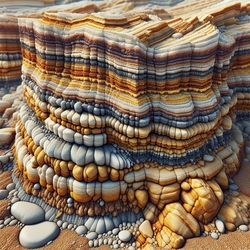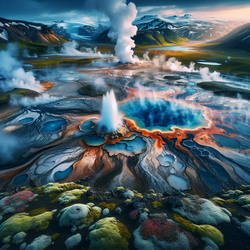
Plate tectonics: the driving force behind earthquakes, volcanic activity, and mountain formation.
The theory of plate tectonics is a fundamental concept in geology that explains the movement of the Earth's lithospheric plates. These massive plates float on the semi-fluid asthenosphere beneath them and are responsible for many of the major geological phenomena we observe.
Movement of these plates can lead to earthquakes, volcanic activity, and the formation of mountain ranges. As the plates interact, they can converge, diverge, or slide past each other, each action creating distinct geological features and events.
My work as a geologist often involves studying the effects of plate movements, especially in regions with high seismic activity. The understanding of plate tectonics has not only been crucial for scientific advancements but also for practical applications such as earthquake preparedness.
In conclusion, plate tectonics is not just a theory but the blueprint for much of the Earth's dynamic character. Acknowledging and understanding this force is essential for anyone interested in the history and future of our planet.






